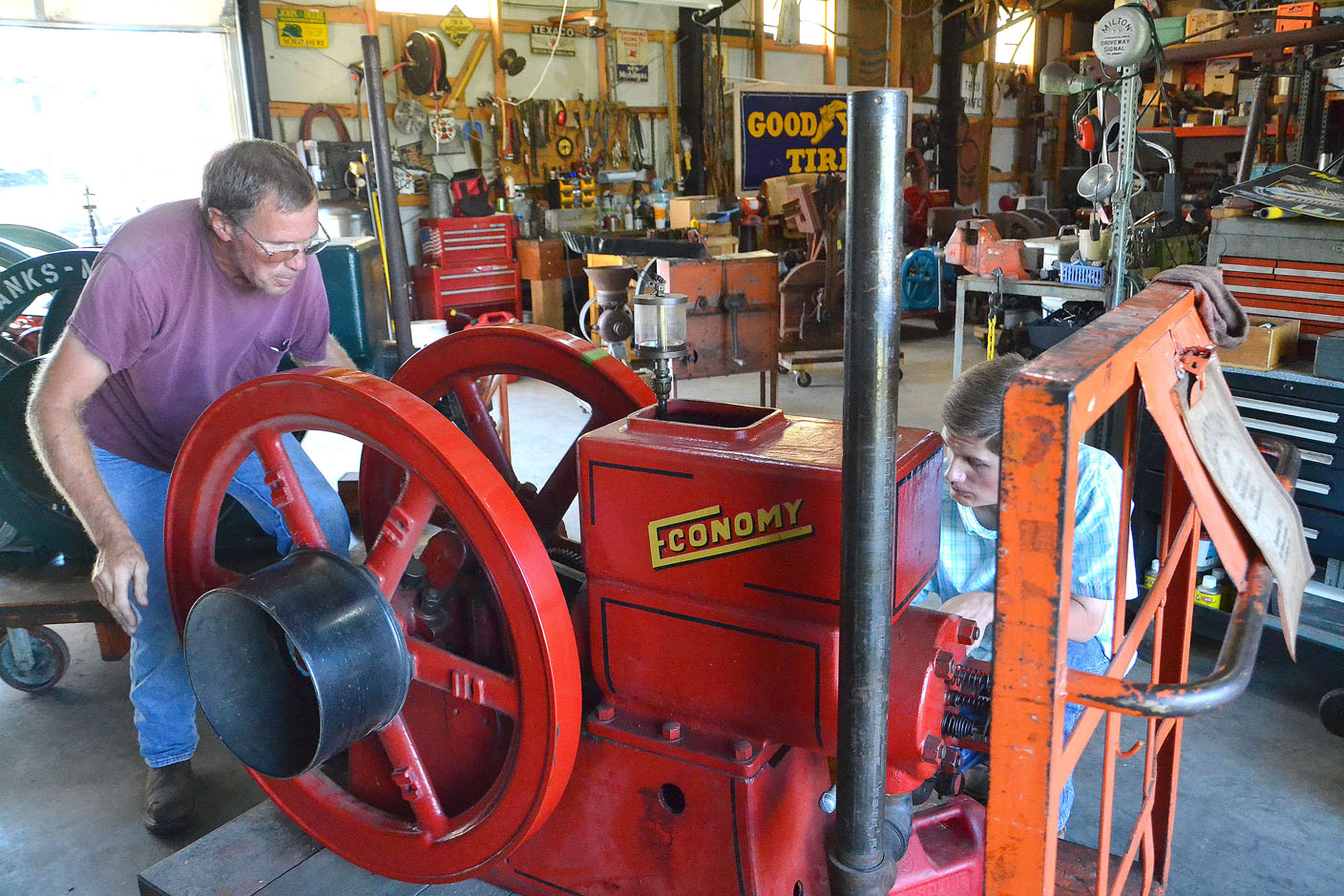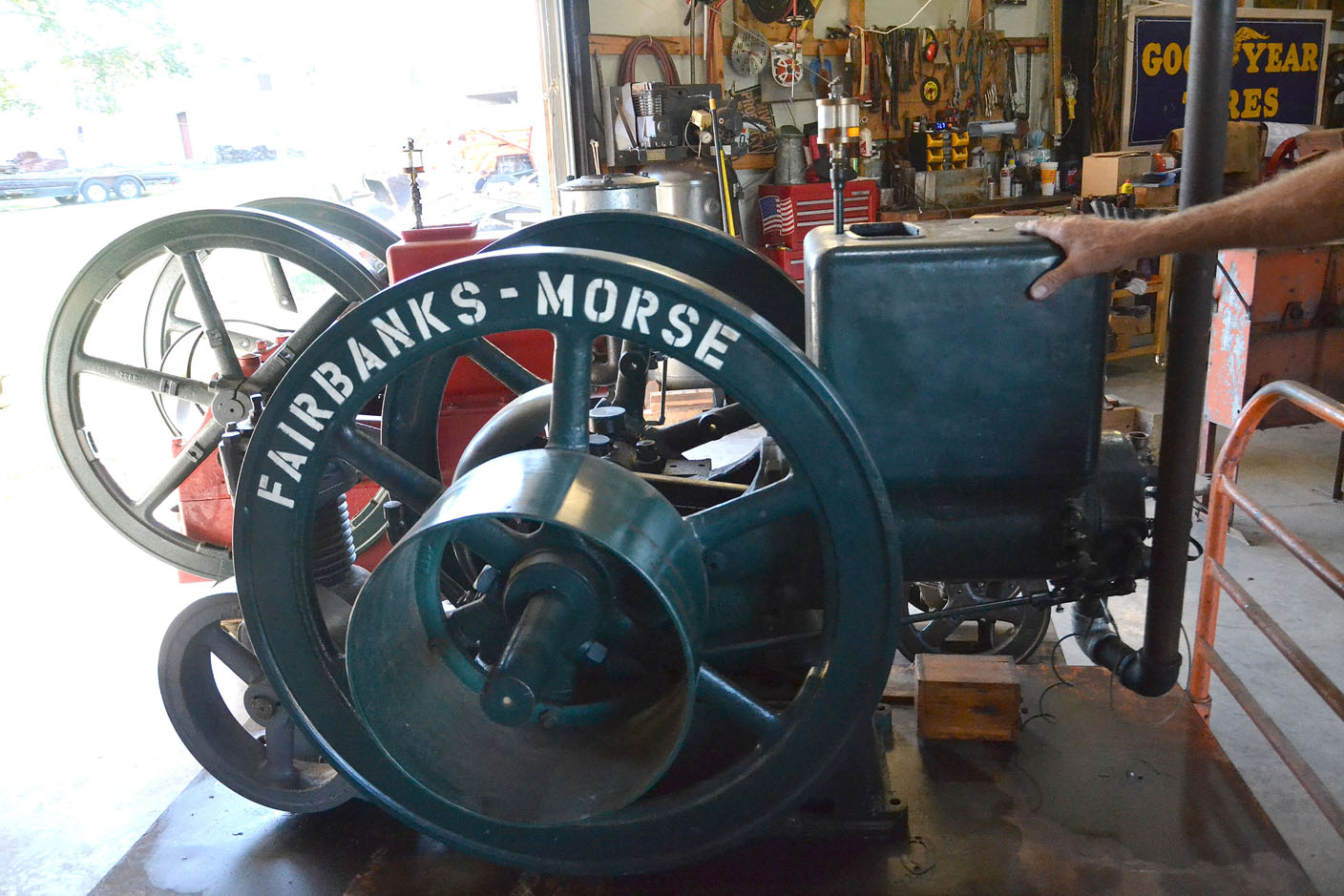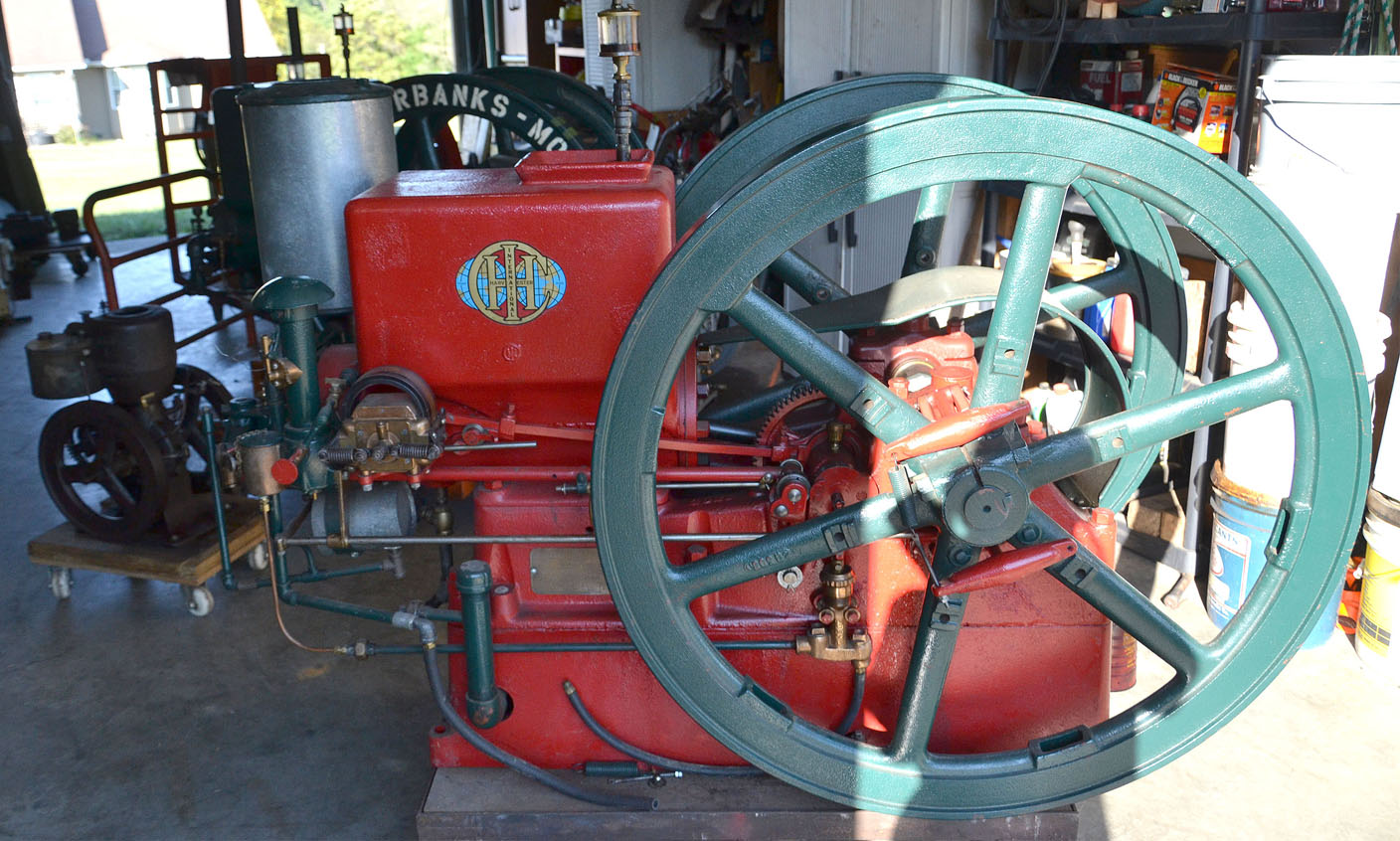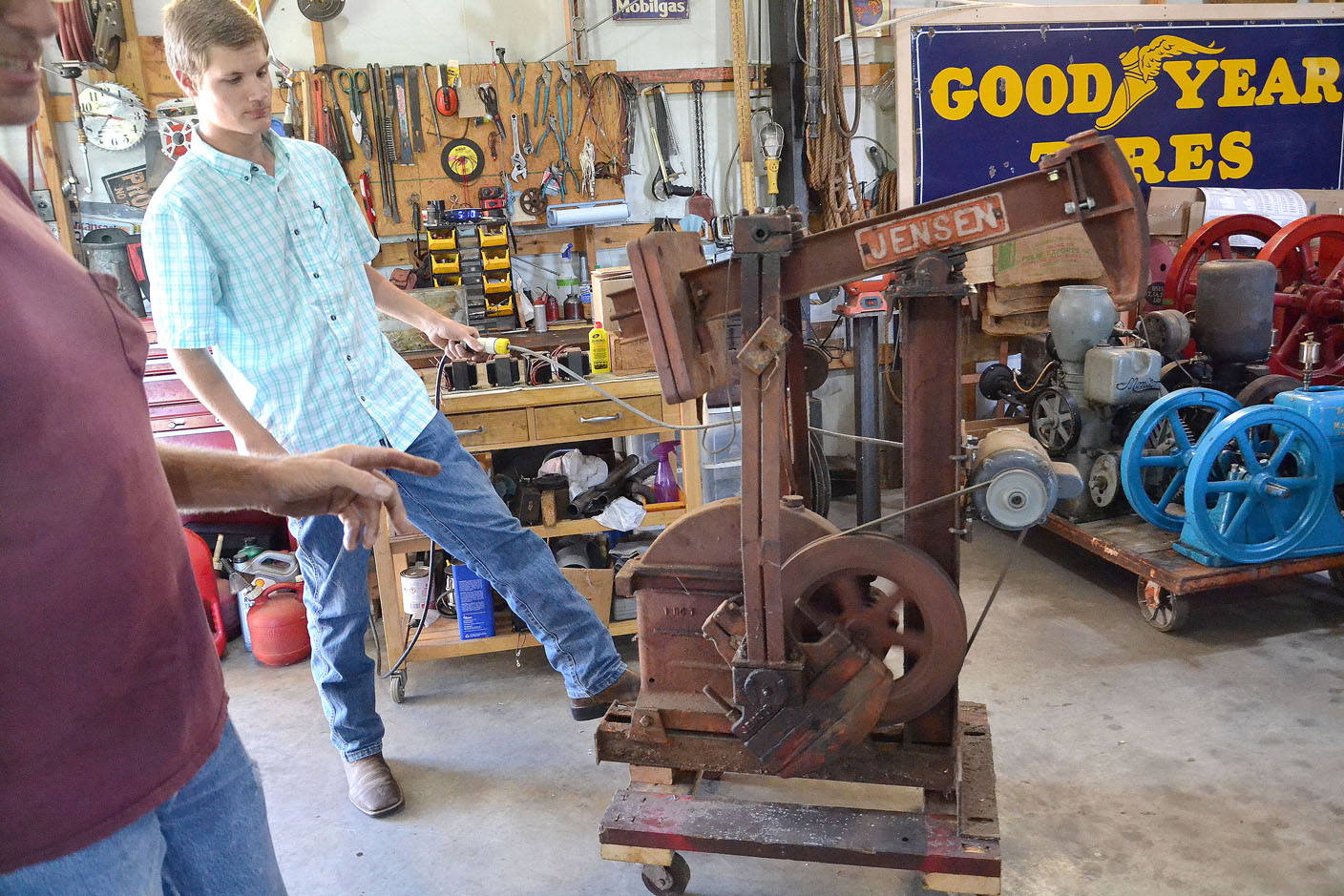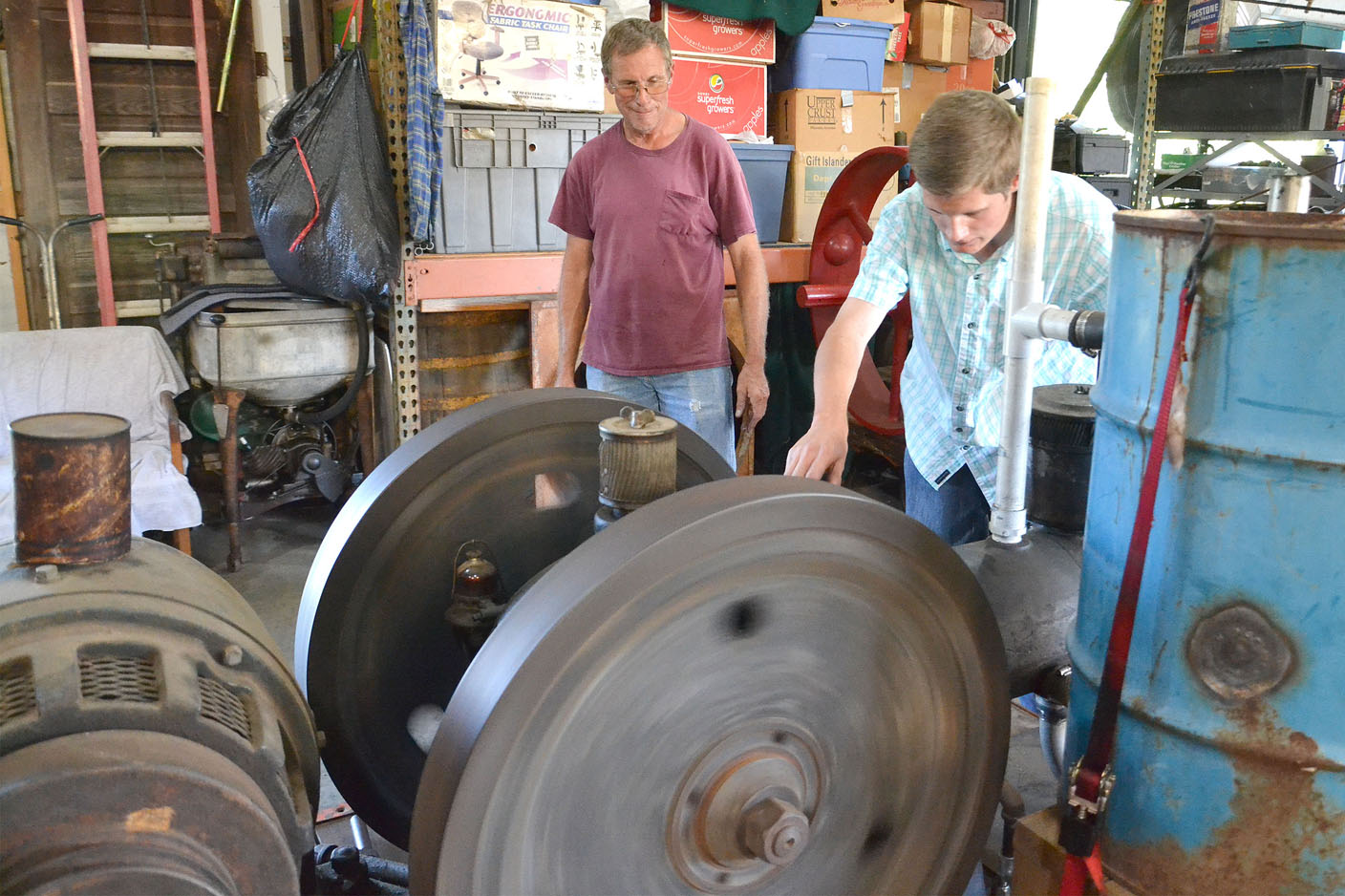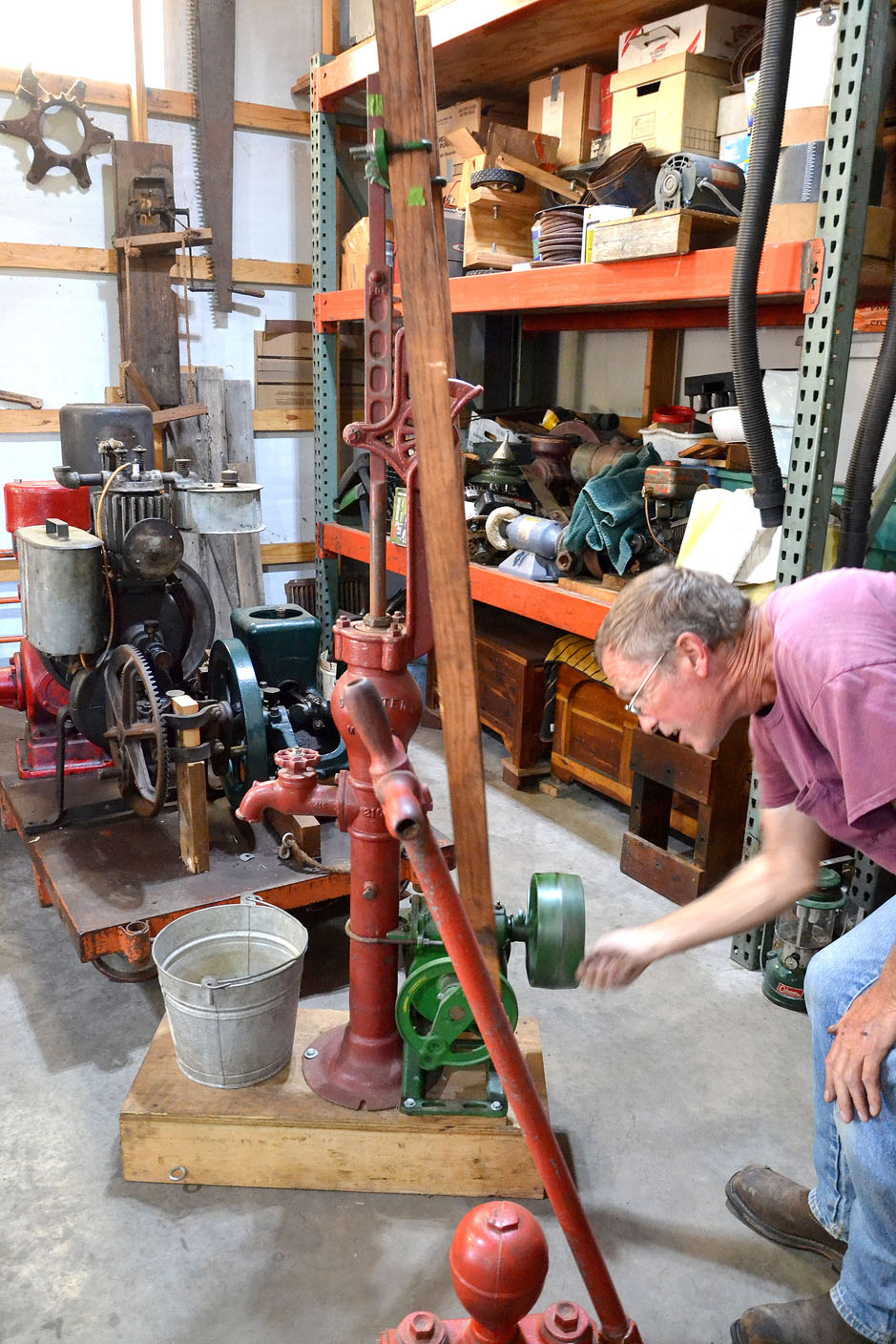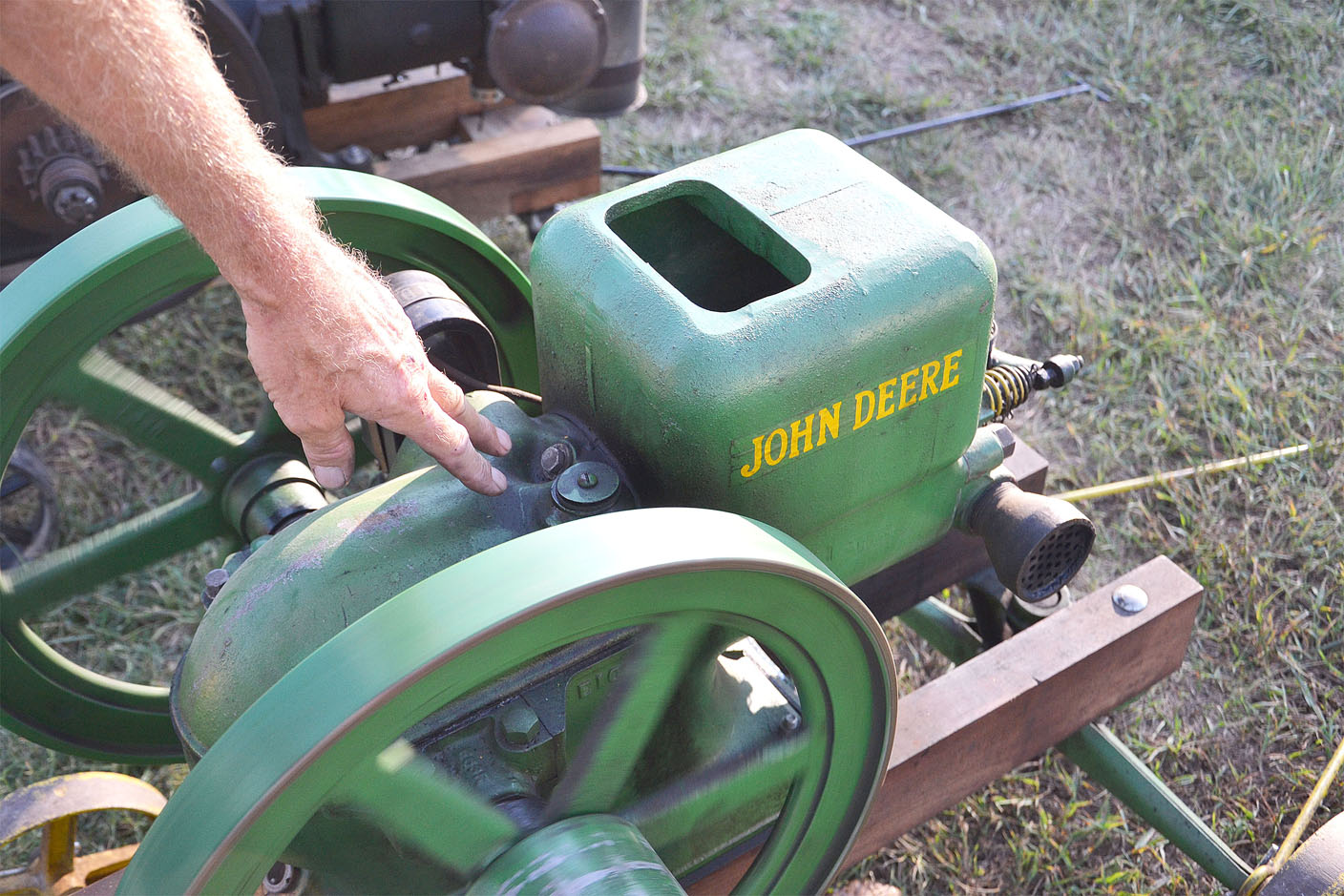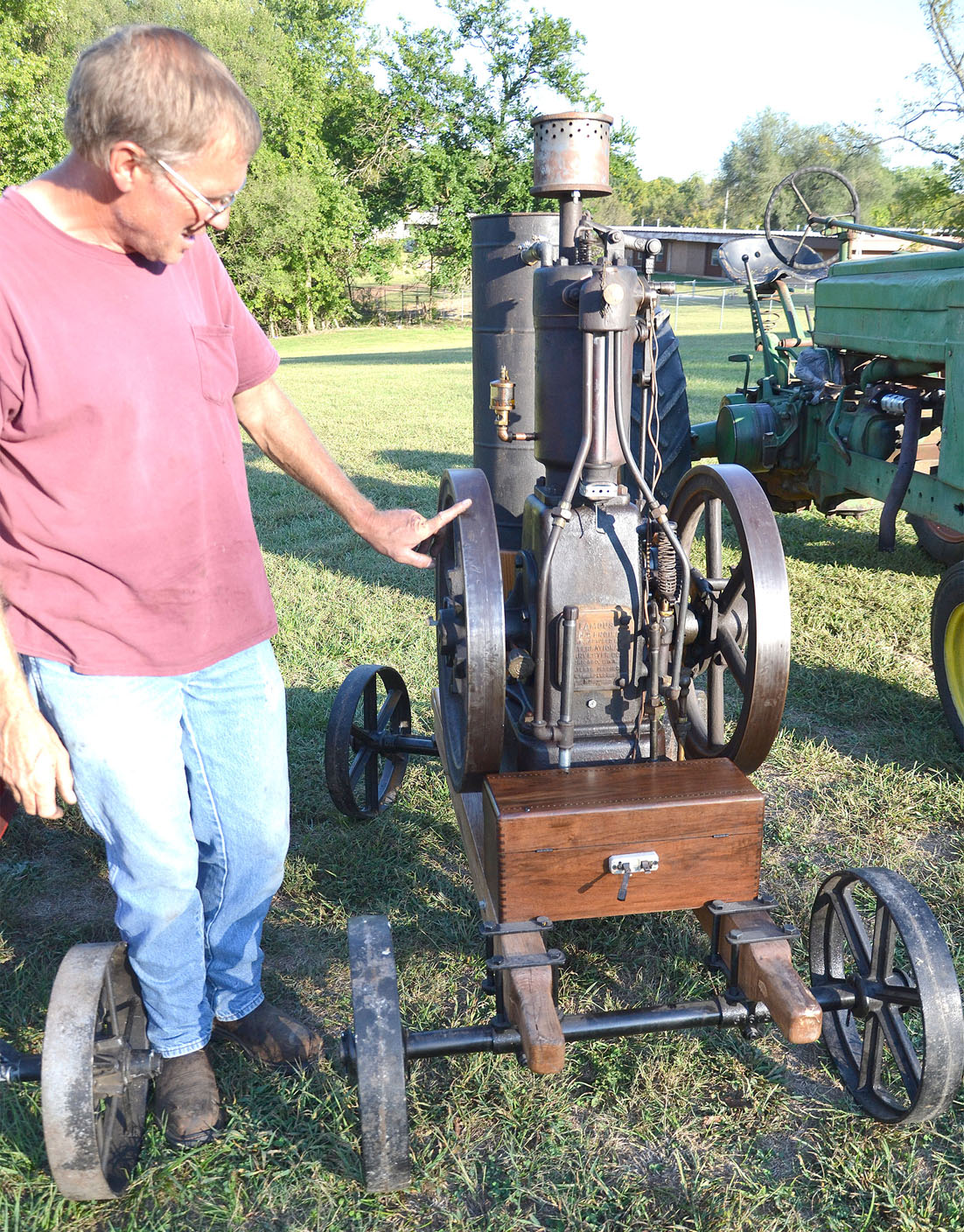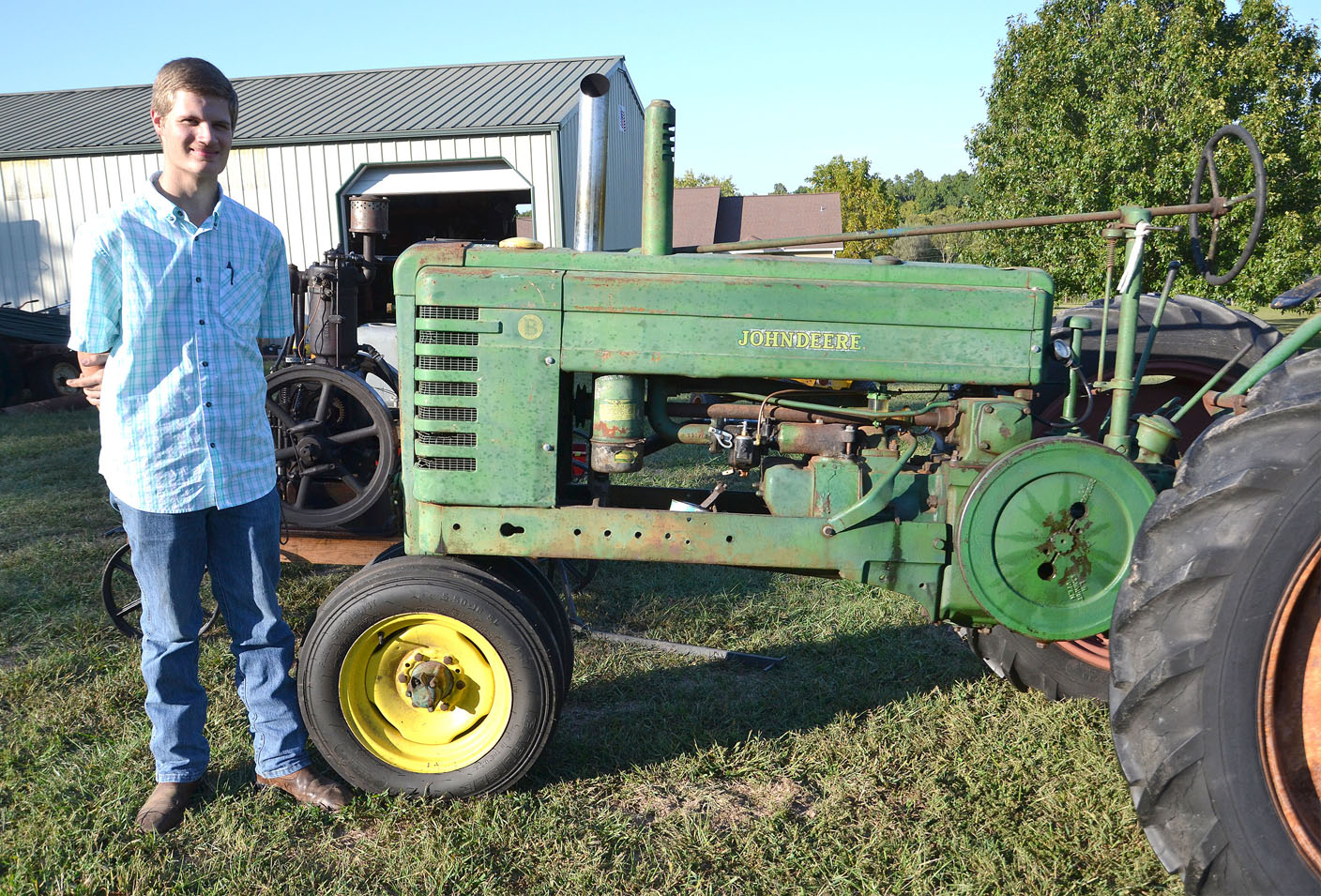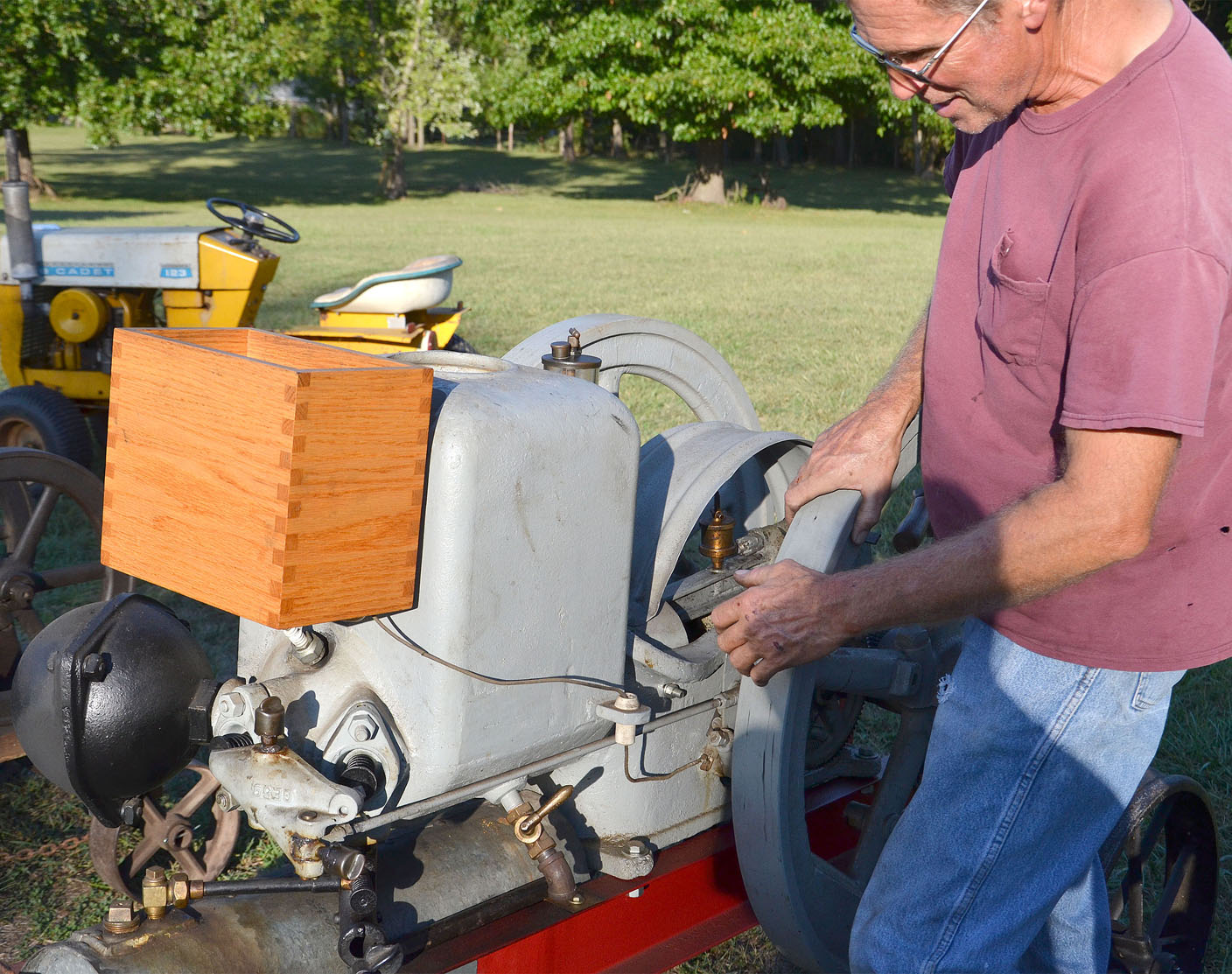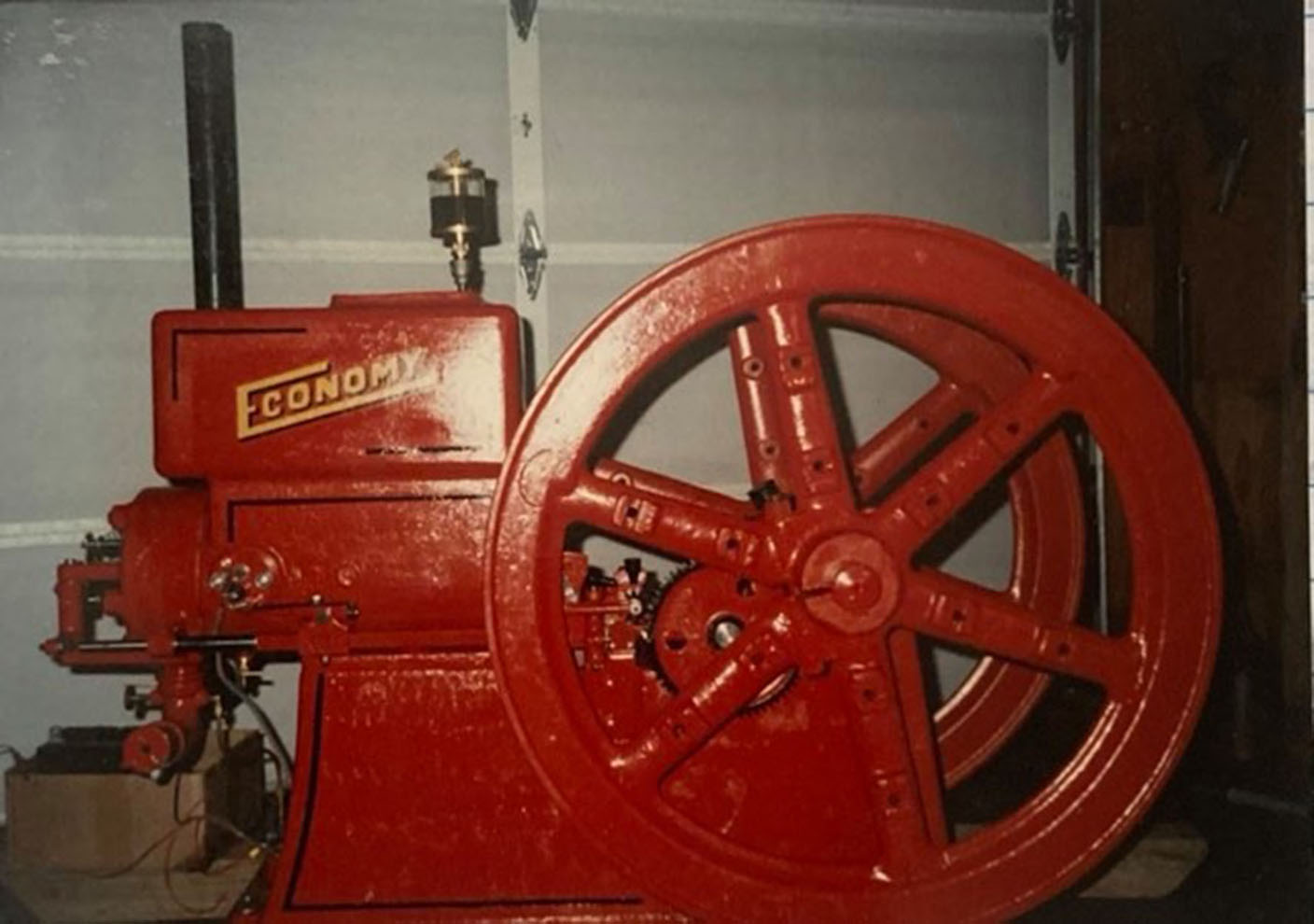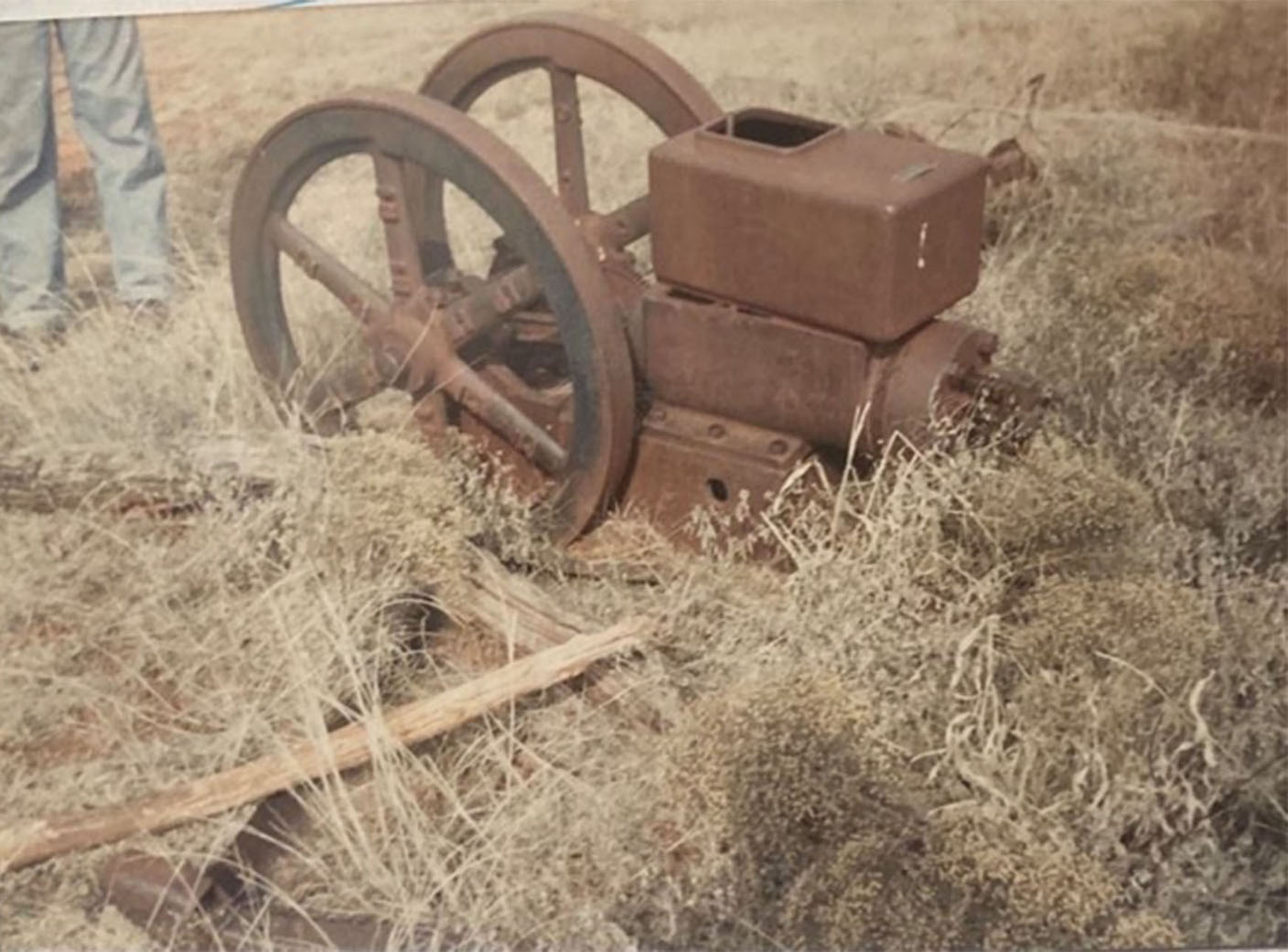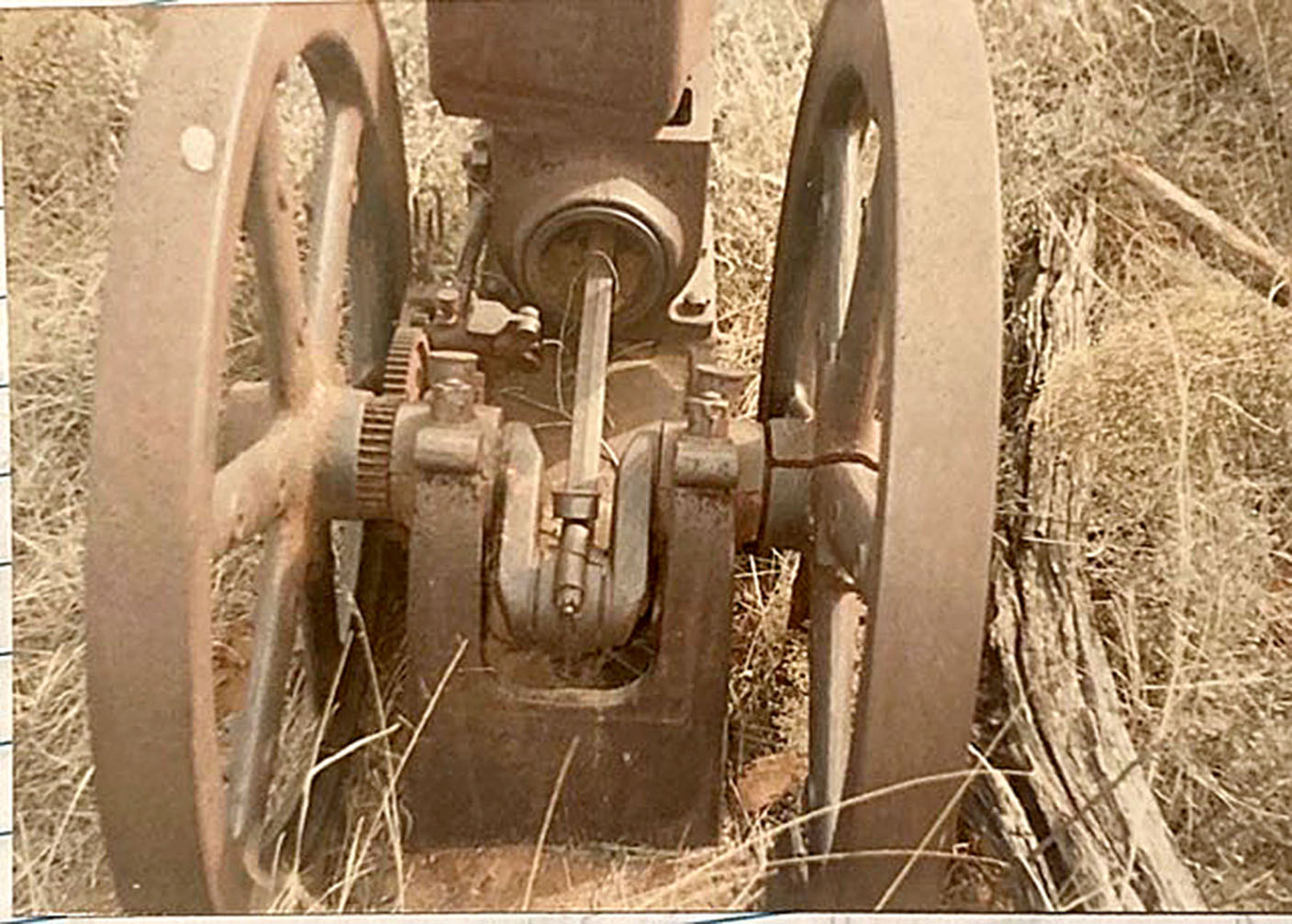A barn full of "hit and miss" gas engines tells the stories of farm life in the Midwest before World War II thanks to Steve Jordan.
The restored engines fill the barn of Jordan, a Pea Ridge native and history aficionado, who can tell of his ancestors on both his mother's and father's side as far back as his fourth great-grandfather in the Pea Ridge area.
It's a family love affair with his father and son Jeremy helping on the engines. They go to many old engine shows and have made new friends through pursuit of the hobby.
"My dad, he made all this," he said, pointing to one machine. He explained that his father worked in maintenance at Burger Motor Company, Rogers Marina, Daisy, Emerson.
"He's my right hand. He makes little stuff. Some of this, you can't get. He had really helped me a lot."
The old gas engines, discarded in favor of electric motors, are old, temperamental and noisy. They pop and then coast, suck up fuel through "mixer" and ignite.
"I went to Springfield, to Steam O'Rama in 1991 -- that's when it all started," Steve Jordan said, explaining his fascination with old engines. "I drove my Model A Ford up there. I'd never been to that and I seen all these engines and tractors ... I got bit by the bug!"
Referring to his hobby as an addiction and a challenge, he said it can be more difficult to find old engines now than when he began.
"Most are in the hands of collectors now," he said. "So finding a engine in the wild is almost impossible these days, but once in awhile you get lucky and find one tucked away in a barn or a junk pile saved by someone."
"It is a challenging hobby," he said.
In addition to the challenge of finding the engines is the challenge of restoring them. Most are rusted with all the working parts stuck.
"You slowly take it apart hopefully not breaking any part in the process because you just don't run to the parts store and get the part that you break or that's been broken for many years," he said. "It challenges you on taking it all apart, cleaning every moving part, repairing any broken or worn out part or finding a missing part, lots of these old engines have what we call 'farmer fixes' because the farmers would fix the old engine any way possible they could when they became worn out or hard to keep running."
"When you finally get to the point of assembling it back together, all the while learning everything you can about it how it's supposed to operate, so the big day comes and you put gas in the tank make sure the spark timing is correct so you spin the flywheels over hoping to hear it pop and take off running!
"Most time it's a all day challenge, you have to find the right fuel mixture because these don't have a regular carburetor like modern engines; you have to find the right fuel air mixture, so you spend hours cranking and wearing blisters on you hand busting a knuckle once in awhile then when you about give up it finally comes to life!
"Then your hooked!" he said, and then "you need another engine to work on!"
"Then the next thing you know your shop is full. A true collector has a saying -- if you can count how many engines you have, you don't have enough!"
The old engines are very heavy, he said. A small engine that has only about two horsepower can weigh up to 200 pounds. The red seven-horsepower engine that was my first engine it weighs 1,090 pounds.
The engines were used for a myriad of purposes -- running haying equipment, washing machines, saws, pumps, grinding corn, butter churning, separating cream.
"These came out of the industrial revolution. Anything they were doing by hand, they figured out how to hook it to an engine," he said.
With dates from as early as 1908, many are from 1916, 1919 and up to the 1930s.
"This is a Jensen pump jack sold right here in Pea Ridge," Jordan said. It was in a well house on the Billy Joe Samuel's farm. He said it was made in Coffeyville, Kan.
"A lot of them didn't survive the Depression," Jordan said of the engine manufacturers. "Everybody had a different design. Some were better than others. They can be pretty dangerous."
Bigger companies like International Harvester, Fairbanks, Morse, John Deere survived because they offered more equipment besides engines only.
Approaching one machine, Jordan said: "This is my pride and joy. It's a 12-horse power Witte generator. It come from right behind the feed store. It was the power supply for the hatchery until they got two-phase electric in."
"Hugh Webb bought it new in 1941 and my grandpa helped put it in," he said.
One of the first engines in the barn is on a Maytag washing machine.
"This is a Maytag washing machine -- it was a gas-powered washing machine they used on the farm," he said, adding that the engine is from 1929 and the tub is from 1927. "When we got it, it had an electric motor on it."
"That was the thing, when electric came into the country, it was get rid of these old gas engines and get electric."
The gas-powered washers would have been kept on the back porch so an exhaust could send fumes away from the laundry.
"Lots of hit and miss engines became obsolete by the 1930s because of more modern engines or equipment," Jordan said.
"When the Rural Electrification Administration (REA) came to the farm, the engines were replaced with electric motors for running water pumps and washing machines and and anything else they use to use a engine on , because a lot of these old engines were built in the teens and '20s so by then they were pretty worn out and hard to keep running," Jordan said. "Electric was so much easier just flip a switch rather cranking and trying to keep a worn-out engine running, so the old hit and miss went it the barn /shed or junk pile or fence row. It was left to set and rust away."
Then, with the advent of World War II, many engines were scrapped for the war effort.
"It's a wonder any old engines survived, but some managed. I heard some farmers still used them and hid them out to keep from getting scrapped."
"Luckily, after World War II, retired farmers started having gatherings called thrashing Bs to show and demonstrate how they used to farm with steam traction engines and hit and miss engines," he said. "Some of these shows still go on to this day there are a lot of shows in the Midwest that have been going for over 60 years now, preserving the history of farm life before World War II."
The modern combine was invented as harvesting wheat and oat crops took several men and women. It was common for farmers would work together helping harvesting the crops while the women prepared the meals for the men working. He said they would go from farm to farm taking their equipment because not all farmers had gas-powered equipment.
"By the 1950s to 1960s, the hobby was starting to grow and men were looking for these old engines so they bought engines off the farmers that saved them buying them up or just hauling them off to get them out of the way," he said.
"The hobby's very big right now," he said, especially in other parts of the country.
The engines tell their stories and the stories of the people who owned them, Jordan says.
"They tell us where we came from. We should appreciate the past and what we came from. They worked hard in the past," he said.


